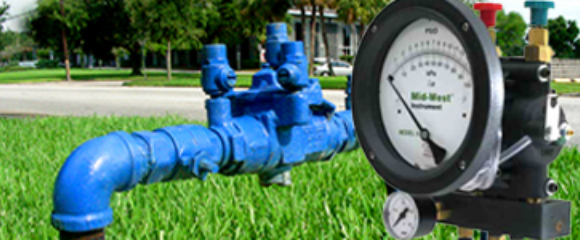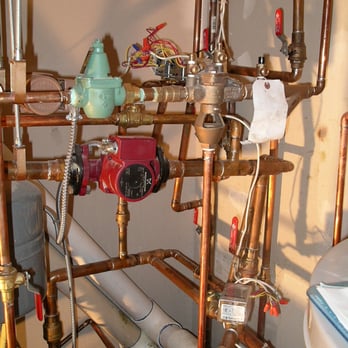Do I Have to Check for Backflow in My Water
Do I Have to Check for Backflow in My Water
Blog Article
In this article down the page you can find some wonderful ideas related to Backflow Assembly Testing.

Yes, you require to backflow test your house's water to make certain that the water is devoid of toxins and hazardous levels of chemicals. As a result of the equipment called for and room for error, you need to not try to execute heartburn screening on your own. We recommend that you call a specialist plumber every couple of years to check your water.
Backflow Can Effect Both You as well as Your City
Many cities establish heartburn standards due to the fact that unsafe heartburn can impact the general public water system in addition to a single building. Modern-day cities have backflow devices in location that secure the water supply that comes from most houses and also business buildings. The actual threat originates from watering systems, which can damage the water system with poisonous plant foods, manure, as well as other chemicals.
What Creates Heartburn?
A typical reason of heartburn is a loss of water stress that triggers the water to siphon back into the water supply. After some time, there is a loss in water pressure and also the tube starts to suck the water back right into the water supply. As you can imagine, there are now chemicals from the paint that are going into the water supply, possibly positioning a threat.
Backflow Screening is Called For by Legislation in Particular Cities
Relying on where you live, you might actually be required by regulation to backflow examination your legislation. Iowa City keeps a document of all residential properties served by the city's water supply. The city needs that particular "high-hazard" facilities undergo heartburn screening. In many cases, residential properties such as houses and also apartment are affected.
You Can Stop Heartburn
The main purpose of a backflow device is to prevent water from flowing backward into your water supply. Plumbing technicians mount the gadget on the pipelines in your home to make sure that the water only streams in the correct direction.
What is Backflow?
In other words, heartburn is when water moves upwards-- the contrary direction in the plumbing system. This is also referred to as "backpressure." When the water moves in this direction, it can blend with damaging toxins and pose a threat.
Call a Plumber to Test for Heartburn Before It is Too Late
While it could sound grim, contaminated water can result in dreadful microbial and also viral infections that are difficult to treat. A plumbing firm can quickly examine your home's water to determine if there are any type of harmful chemical degrees. The small financial investment is if you can prevent the torment that comes from drinking contaminated water. And also if you do find that your water has high degrees of toxic substances, a plumber can conveniently mount a heartburn prevention device.
Yes, you need to backflow test your home's water supply to make certain that the water is free of contaminants and unsafe degrees of chemicals. Lots of cities develop backflow guidelines since dangerous backflow can influence the public water supply in addition to a solitary building. A typical reason of heartburn is a loss of water pressure that creates the water to siphon back right into the water supply. After some time, there is a loss in water stress and also the hose begins to suck the water back right into the water supply. The major function of a backflow device is to stop water from flowing in reverse into your water supply.
Backflow Testing: What Is It, and Why Is It Necessary?
What Is Backflow?
Backflow is exactly what you might imagine this somewhat gross-sounding word to mean. It is contaminated water that has reversed flow, and as a result, enters into the clean water lines of homes and businesses. Backflow is typically caused by a significant change in water pressure. This can be due to a water main break, frozen pipes or an unexpectedly high demand on the water system. It can occur at any cross-connection between clean and dirty water in residential, commercial or industrial water lines. And the worst part – backflow can contain hazardous materials like human waste, pesticides or chemicals. Needless to say, it poses very, very serious health concerns, not to mention the potential for a heap-load of expensive stress!
Backflow Prevention and Testing
In order to safeguard against backflow in standing structures, a backflow prevention device should be installed by a trusted team of professionals. Once installed, if there should ever be an unexpected or dramatic change in water pressure, the device will prevent backflow from entering into the clean water supply system. But, again, it’s important that this device is properly installed by a professional so that they can test it and ensure that the clean water line remains contaminant free. This really is key.
While personal standards and responsibilities should maintain certain routine testing requirements, there are already municipal codes in place that require annual testing of these backflow prevention devices. This ensures that they are functioning properly and that no hazardous contaminants are spilling out into the clean water supply. If, however, testing of any device is not completed on time, you should know that a property or business’ water supply might be interrupted, and the property owner might even face fines. So, to avoid this from happening to you, we recommend scheduling a backflow test well in advance.
Fortunately, here at Tritan, we can help schedule and carry out backflow testing for your property. We provide a variety of backflow-related services, including prevention device installation and testing. Call us today and make sure that this stressful problem doesn’t happen to you and your property or business.
https://www.tritan-plumbing.com/blog/2018/february/backflow-testing-what-is-it-and-why-is-it-necess/

Do you really like more info about Backflow Prevention? Put a review down the page. We'd be pleased to know your insights about this page. In hopes that you come back again in the near future. Liked our post? Please share it. Help another person discover it. We truly appreciate reading our article about Backflow Prevention.
Browse Our Site Report this page